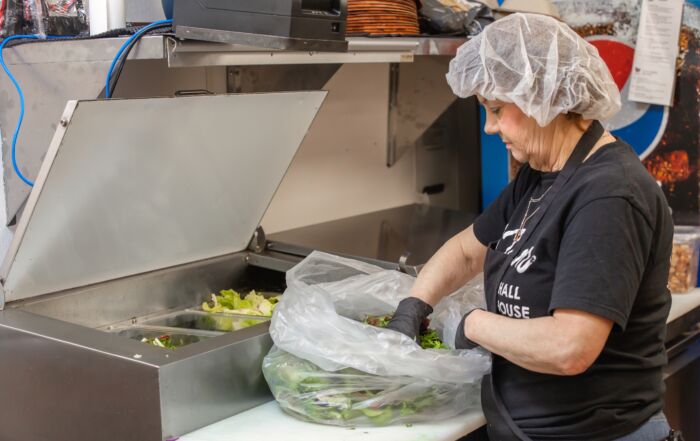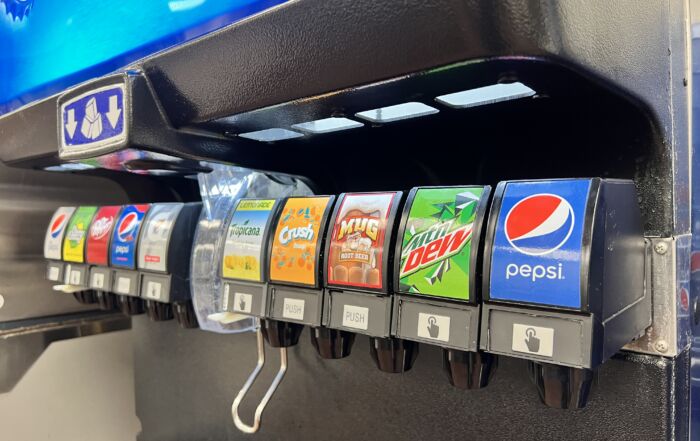Holiday Food Safety Controls
In case you have not noticed – the holidays are here! We have seen store decorations up since mid-September and early bird deals advertised for several weeks, stretching the typical Black Friday deals throughout the month as retailers strive to ensure market share, while following increasingly stringent mandates for physical distancing
Typically, foodservice operations are very busy during the holiday season, catering parties and hosting gatherings. With reduced capacity allowances, limits on gatherings, and social distancing, chances are this stream of revenue will be less than in previous years. As operators, regardless of type of foodservice, the focus continues on safety, quality, and ultimately profitability. And with the COVID pandemic still in full throttle (although it appears a vaccine may become available later this month), customers are attuned to safety practices. So, while operators strive to control food costs by minimizing waste in an environment where carry-out has become the norm, they must also consider the safety of foods. The adage of “when in doubt, throw it out” is common, but, like with so many other situations, decisions to discard food will depend on multiple factors such as characteristics of the ingredients and history of use. In our first blog this month, we will focus on ways to keep staff healthy and food safe, while the second blog will explain considerations in making decisions to discard food.
…while operators strive to control food costs by minimizing waste in an environment where carry-out has become the norm, they must also consider the safety of foods.
The holidays are a special time of year with gatherings of colleagues, friends, and families, particularly this year when “lockdown fatigue” may be present. Yet, this is also the time of year when the Germ Grinch can spoil all the fun. For the past nine months, employee health status has been a hot topic. Employers and/or guests have monitored staff members’ temperatures, handwashing practices, coughing and sneezing strategies, mask-wearing techniques, cleanliness of uniforms, use of gloves, cleaning strategies, and the list can go on and on. New protocols to reduce surface contacts, such as cashless transactions, have also been implemented.
No doubt, your operation has adopted many new “best practices” in efforts to mitigate risks of illness. But let’s not forget the basics. Here are some questions for foodservice managers and operators to ponder as they meet the responsibility in keeping food safe while it is in their custody:
- Have you mandated all staff receives a flu shot? For the past several months, public health campaigns have encouraged everyone to get a flu shot, not just the most vulnerable cohorts of the population. This year, the flu vaccine is readily available and inexpensive.
- Have you clearly communicated to all staff that they should report certain symptoms to you, such as high fever, coughing or sneezing, diarrhea, or vomiting? Communication should occur through the Employee Handbook, Employee Health and Hygiene SOPs, and in formal and pre-shift training. Do employees know about the six reportable illnesses (Norovirus, Salmonella, Salmonella Typhi, E. coli, Shigella, and Hepatitis A)? And remember, some of these illnesses pertain to members of the employee’s household, so a refresh notice may be needed.
- Does the work culture reward those who communicate symptoms or illness? Is it likely a staff member would think they are letting their team down if they don’t show up for work? Help team members realize that coming to work when they are symptomatic or ill is only a short-term gain because spreading germs may cause others to become sick, or at the very least, will slow down productivity. Consider the return on investment of a sick leave policy and training versus the cost of a foodborne illness. Our January 2021 SafeBites webinar will discuss this topic of ROI – stay tuned!
- Is there clear guidance on temperature control steps through SOPs for storing, preparing, cooking, and cooling food? Keeping food safe is dependent on ensuring items don’t spend too much time in the temperature danger zone (between 41°F and 135°F). Use calibrated thermometers to provide accurate information. Reminder signage and training videos are widely available through public health offices (check with your local health inspector); university extension offices, such as these provided by Iowa State University Extension and of course, the resources that FoodHandler has made available.
- Are there sufficient supplies readily available for effective cleaning and sanitizing, and, do staff understand the practices to follow? Are procedures monitored and verified? Again, resources to ensure that effective cleaning and sanitizing occurs in your operation can be found at sites indicated above. But, don’t forget the role of managers and other team members in ensuring these are followed.
For many, the end of 2020 can’t come soon enough! It certainly has been a year with challenges and one that has required enormous flexibility and adaptability. Congratulations to those who have persevered during these difficult times. We at FoodHandler wish you the best and will continue to offer support as we are able. Risk Nothing!
Safely Shopping at Farmers’ Markets: A Food Safety Guide for Foodservice Operators and Chefs
Farmers’ markets are an appealing source of fresh, local, and seasonal ingredients for individuals and [...]
Ice Machines, Beverage Dispensers & Other Overlooked Food Safety Hazards
At the end of the spring semester in our campus food production lab, we’re fortunate [...]
What Foodservice Professionals Need to Know about the FDA Milk Testing Changes
In late-April and early-May 2025, headlines across the country and several social media posts stirred [...]
Before They Arrive: Your Health Inspection Prep List
A few weeks ago, I welcomed our local health inspector into a class I was [...]










